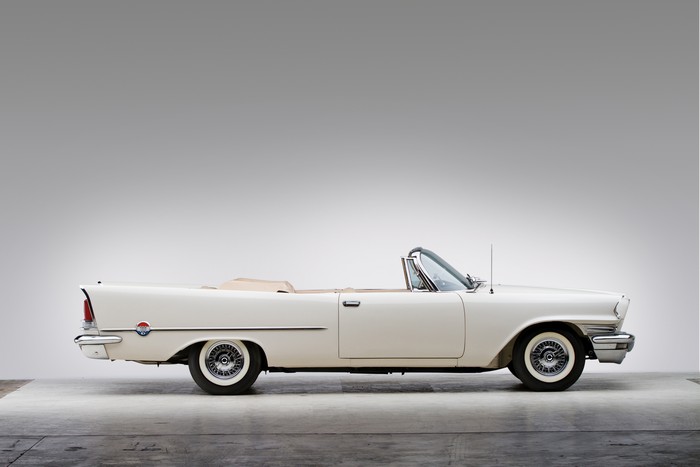No chassis number available
For much of its history, Chrysler was a frontrunner in building some of the most interesting and exciting high-performance cars Detroit had to offer. Foremost among them are the formidable early Hemi-powered Chrysler 300 “letter cars” of the 1950s, which, by virtue of their cost and long list of standard and optional features, were reserved for the wealthiest and most discerning buyers.
Cloaked in handsome Virgil Exner-designed bodies and carefully engineered, the 300 series offered the ultimate in American luxury and performance. Due to low production and high cost, 1958 was also the last year that the company offered its Hemi in a full-size Chrysler.
This example is painted white with a tan canvas top. It has excellent body contours and gaps with few, if any, detectable paint flaws, except for some scratches near the top of the driver’s side door, which otherwise fits and shuts very well. The lightly worn tan seats are in good condition, as is the black dashpad. The odometer shows 55,239 miles, which are believed to be original. Other interior finishes include the excellent black carpeting and the tan top boot with optional power steering, power brakes, windshield washers, a power seat, power windows and an AM radio.

